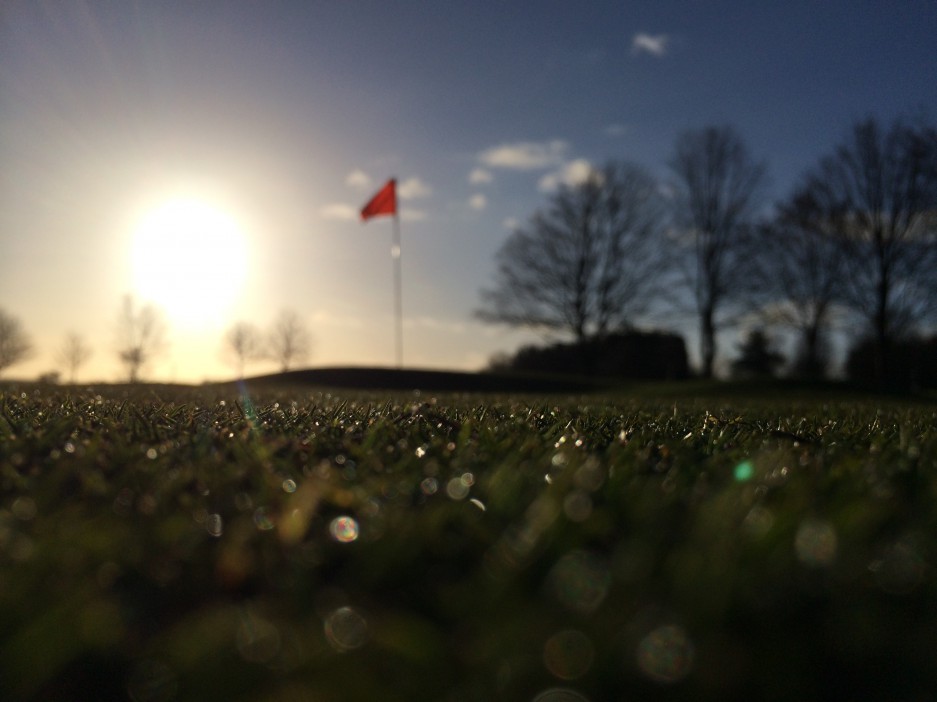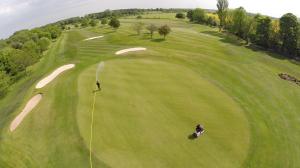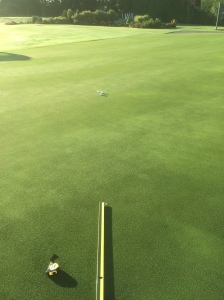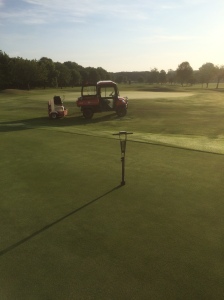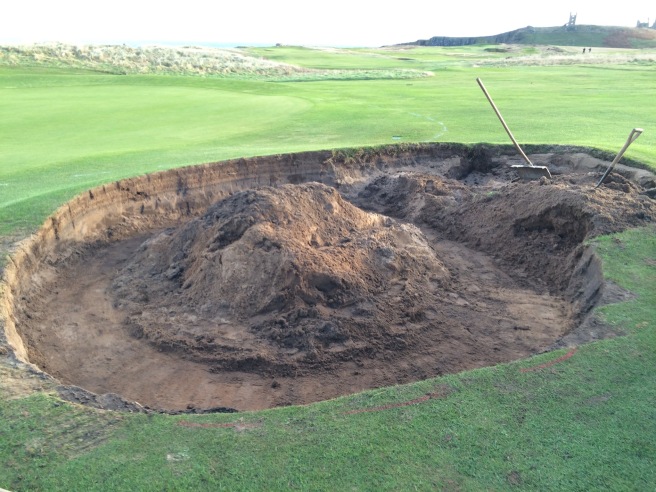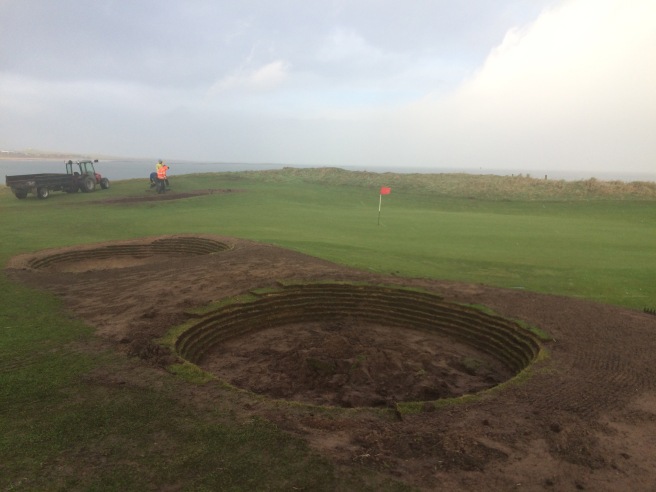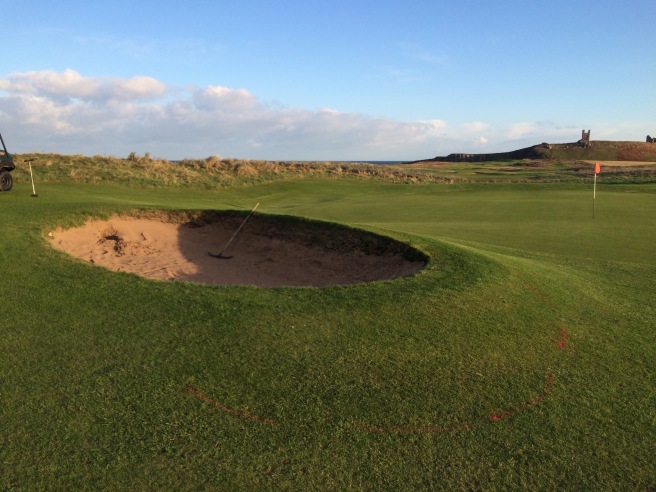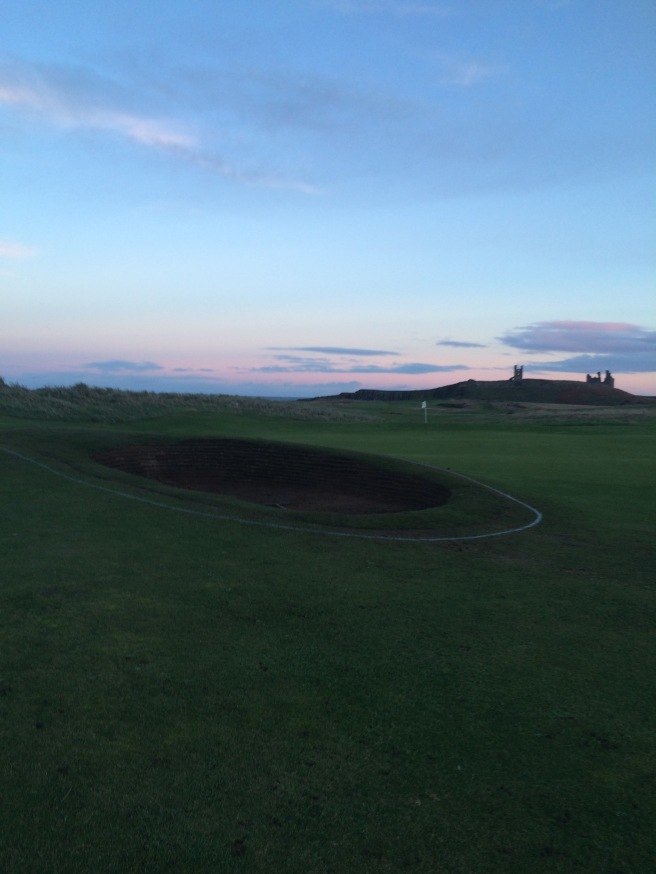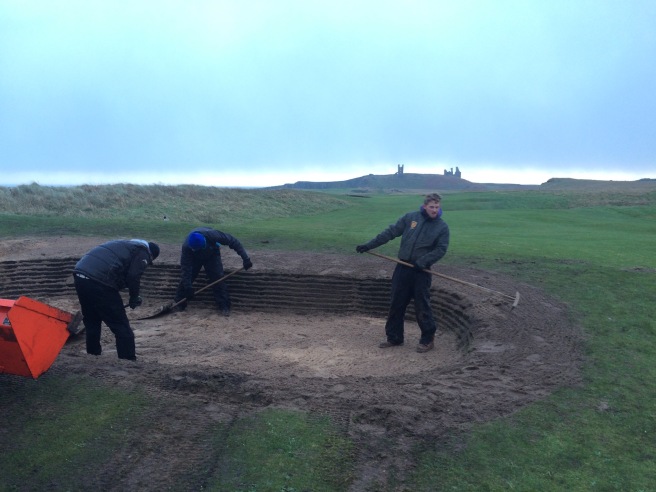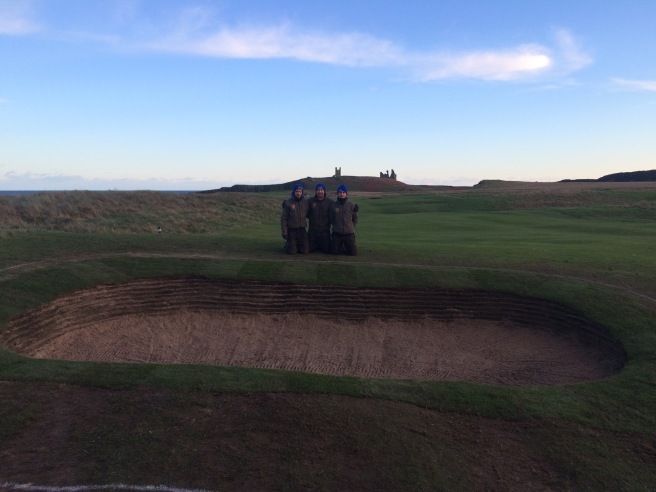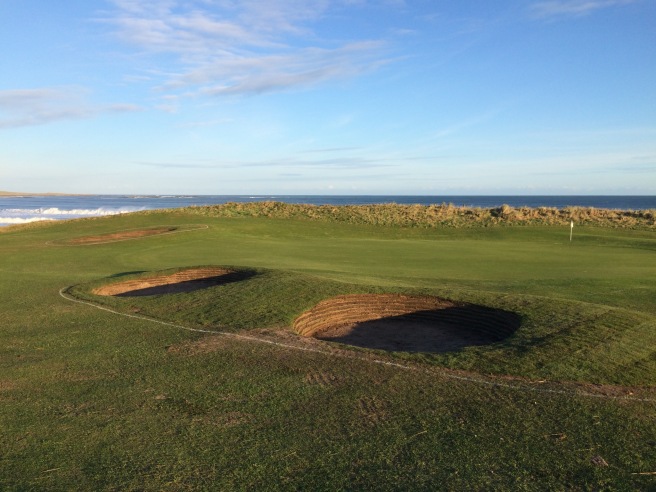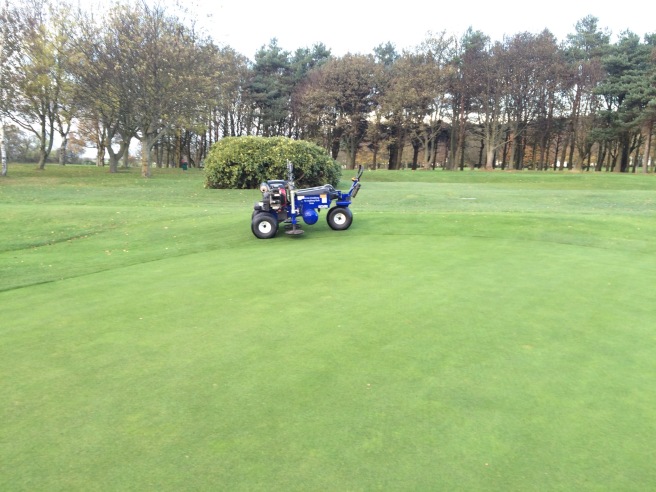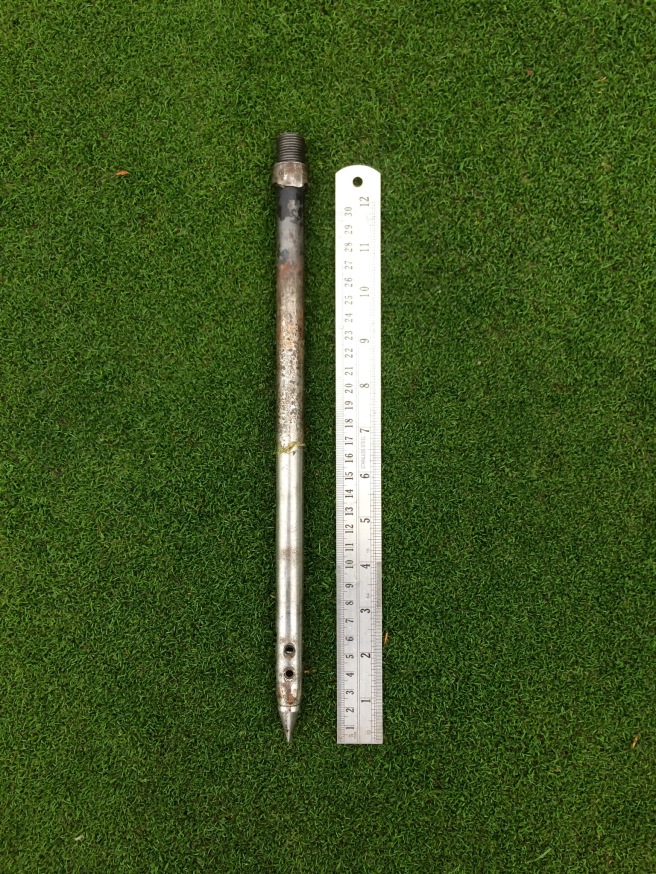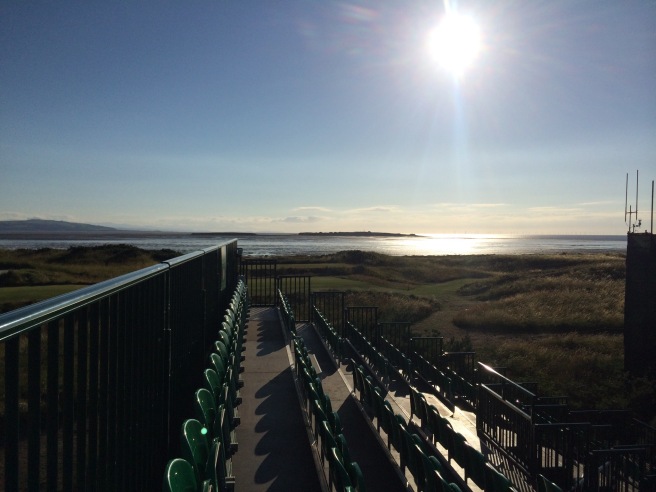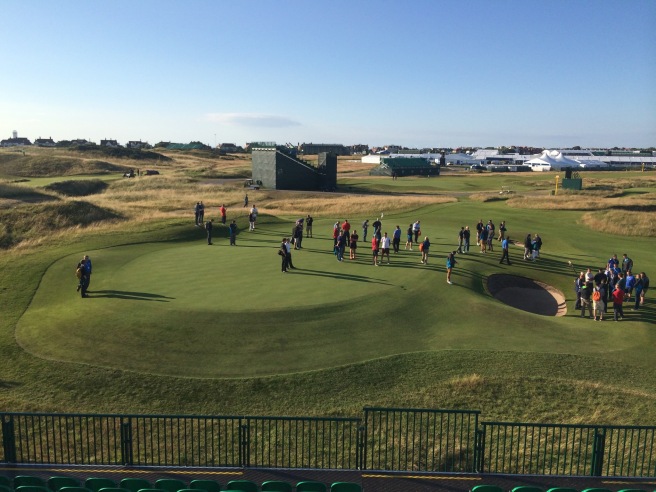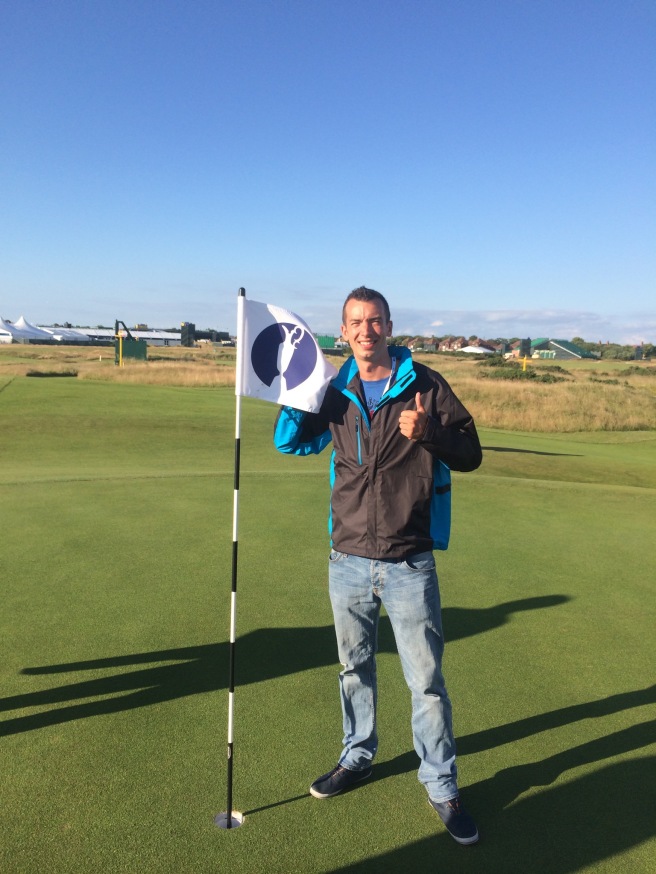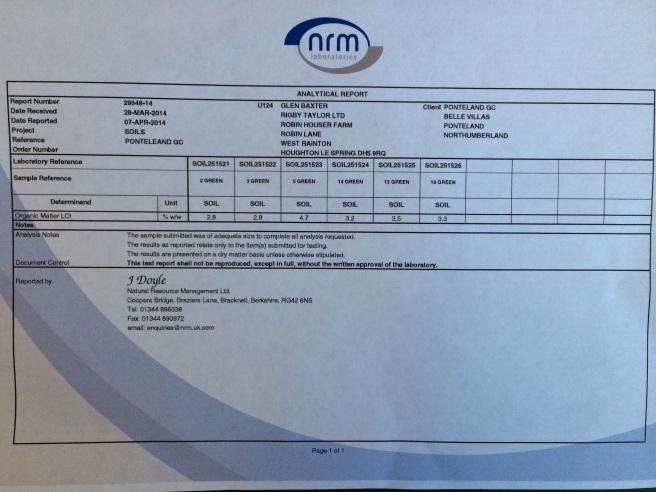The last two weeks have been kind to us weather wise meaning that last week we took the opportunity to concentrate our efforts towards increasing greens performance. I’m sure those that played would agree that it was a pleasant surprise how quickly they bounced back from winter and that we can look forward to an enjoyable season ahead. However, In order to start building towards the season first of all we must complete our spring renovation. The health and condition of the greens at the moment is very good and with a favorable forecast we have decided to bring spring renovation forwards to this week. We appreciate the member’s patience during this time as disturbance to both play and the playing surfaces cannot be avoided but this process is essential to build the foundations of a successful season. The work that will be carried out is as follows.
Scarifying – The warm and wet winter that we have just witnessed has meant that grass growth has been possible for the majority of the winter. This also means that organic matter is being created. To combat the creation of any new organic matter the spring renovation will start with scarifying the greens to a depth of 7mm.
Aeration – The greens will then be Verti-Drained using 17mm solid tines to a depth of 250mm (10inches). This is to create vertical drainage channels that increase the speed that water can drain away from the surface. Once the green has recovered and tine holes cannot be seen, they still continue to work throughout the season.
Topdressing – In total we will be using 60 tones of sand to help fill the drainage channels created with the Verti-Drainer, this ensures that the channels stay open for longer and once filled provide a good habitat for the grass plants root system, this in turn promotes root development.
N.B. In theory all tine holes should be 100% filled with sand. In reality this is near to impossible with the resources at hand without smothering the greens causing more damage. During this process we aim to work as much sand down into the tine holes without causing excessive disturbance to both play and the surfaces. It is important to create a win win situation for both the greens and the membership.
Aeration – We then use the aercore to aerate the greens using a 6mm solid tine to a depth of 75mm (3inches) this further helps migrate the sand down the Verti-Drain tine holes and creates more tine holes to be filled.
Topdressing – Topdressing is carried out again to top up any holes that require it and in the following weeks lower rates can be applied to maximize migration and to smooth out the playing surfaces.
Verticutting – The first part of this operation is to target organic matter and we finish up with a verticut to a depth of 3mm targeting thatch the same as scarifying but to a lesser degree. Verticutting maximizes organic matter removal but by doing so at the end of spring renovation we also further push sand down into the soil profile and clean the surfaces of any smothering sand. Spring renovation comes to a close with a blowing of the greens removing any debris and a double roll to help settle and smooth the playing surfaces.
Once again we thank you for your patience during this process and we look forward to a great season ahead.
